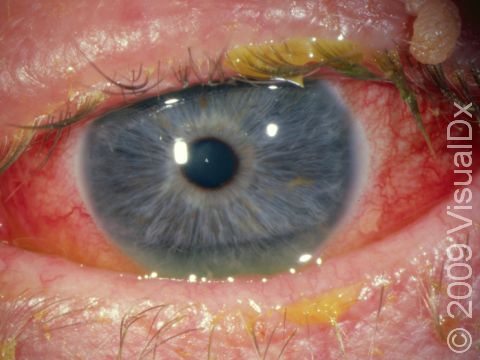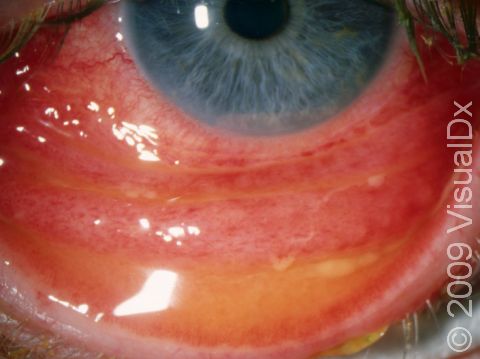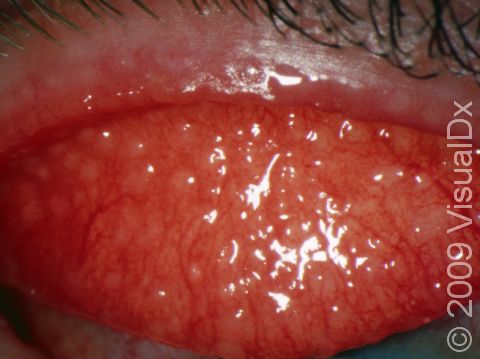Pink Eye (Conjunctivitis)
Pink eye (conjunctivitis) is an inflammation of the tissue on the surface of the eye and/or the inside lining of the eyelids. The more common causes of pink eye include:
- Infection (viruses, bacteria)
- Inflammatory causes such as chemicals, fumes, dust, and debris
- Allergies
- Injuries
- Oral genital contact with someone who might be infected with a sexually transmitted disease (STD) such as chlamydia, gonorrhea, or herpes
Who's At Risk?
Pink eye is very common all over the world. Nearly all people have it at one time or another. Pink eye is often caused by an irritant in the eye(s) or infection from someone else. Age, sex, ethnicity, and race play no role in who becomes infected with pink eye. Failure to do the following increases your chances of getting pink eye:
- Follow good hygiene, such as washing hands regularly.
- Use proper eye protection when in conditions that might increase your risk, such as working in dusty or fume-filled areas.
- Avoid allergic influences that might affect you, such as perfumes, weeds, mold, etc.
Signs & Symptoms
The eye is usually pink to red with an irritated appearance. There may or may not be a discharge (tears, mucous, or pus), and there may be sensitivity to bright light. There may be burning, itching, a sandy or gravely feeling, and even pain. The lids may be stuck together in the morning upon waking. Vision might be blurred by the mucous or excess tears in the eye(s). Pink eye typically affects both eyes.
Self-Care Guidelines
- Wash hands frequently so as not to contaminate others or reinfect yourself.
- Separate your towels and washcloths so that others will not be at risk.
- If itching is the most irritating feature, apply cold compresses.
- If swelling is bothersome, apply cold compresses.
- If there is a lot of discharge, especially if mucous-like, use warm compresses.
- If there is aching and/or pain, use warm compresses.
- Wash the eyelids very gently and soak off debris; do not pick at it.
- Never rub the eyes, as this can spread the problem.
- Do not share contact lens paraphernalia with an affected person.
Most over-the-counter medications will soothe the eye, but, since most pink eye is viral and will go away on its own within 7–10 days, no other medications are usually needed.
Note: Do not rub or touch your eyes when you get a cold or upper respiratory infection, as this can spread the disease to the eyes.
Treatments
Topical antibiotic, anti-inflammatory, and anti-allergy drops may all be prescribed by your doctor. If the pink eye is recurring frequently, oral antibiotics may be prescribed. If the pink eye is related to another disease elsewhere in the body (such as a respiratory disease or an STD), that disease will need treatment as well.
Visit Urgency
- Pain is increasing.
- Vision is worsening.
- There is blistering and/or rash on the eyelids.
- Swelling is increasing.
- There is a lot of thick mucus secreting.
- The condition is not getting better within a week.
Note: Thick, pus-laden discharge may be from a possible blinding form of pink eye and requires urgent medical care.
Trusted Links
References
Yanoff M, Duker JS, eds. Ophthalmology. 2nd ed, pp. 398-401, 404-411. St. Louis, MO: Mosby, 2004.
Last modified on October 10th, 2022 at 8:03 pm

Not sure what to look for?
Try our new Rash and Skin Condition Finder


